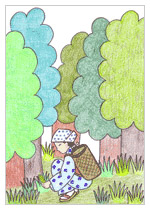
むかしむかし、まだ有馬温泉が「摂津国の湯山(ゆのやま)」と呼ばれていた頃、湯山 (有馬)に入る最後の峠に小さなお堂がありましたが、これは、旅人が休むための小屋で、仏様やお地蔵様などをお祀りしていました。このお堂で、おとくという小母さんが一人暮らしをしており、宿屋でお客さんのために山菜摘みをしていました。その宿屋は、湯治と山菜料理でお客さんの病気がどんどん回復するので評判になりました。
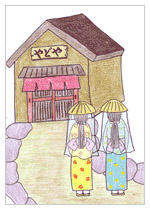
ある日、遠く離れた丹後(京都の北にある国)から女の子と母親の二人連れがこの宿屋にやってきました。一家四人の手足がしびれ、激しい痛みで毎日苦しんでいるが、お金が十分ないので、とりあえず娘と二人だけで来た。「もし治れば、もっと働いて、家にいる旦那と息子も連れて来たい」と言いました。おとくさんは、直ぐに山菜を食べてもらい、湯治もさせましたが、母娘は日毎に弱っていきました。

そして、「お金が無くなったので明日帰ります」と言って、布団に横たわったまま泣くのです。

おとくさんは、万病によく効くという木の実を知っており、それは、お堂の近くの、こんぶ滝の直ぐそばに生えていました。
この木の実は、辺りに住む狼の大好物だったので、これまでは狼の仕返しを恐れ絶対に摘んだりしませんでしたが、母娘の哀れな様子を見て、ついに木の実を摘みに行く決心をしました。
こんぶ滝で木の実を見つけ、狼の食べる分を残し、母娘二人分の木の実を持って帰り支度を始めましたが、丹後で苦しんでいる旦那さんと息子さんの姿を思い浮かべ、思わず狼の食べる分まで摘んでしまいました。
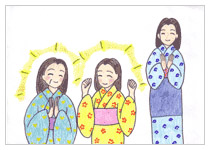
宿屋に帰って母娘に食べさせると、すぐに熱が下り、痛みが取れて痺れもなくなりました。すっかり元気になった母娘は峠の下あたりまで何度も振り返って頭を下げて、お礼を言いながら丹後まで帰っていきました。おとくさんも、その母娘の姿を見て大変喜びました。
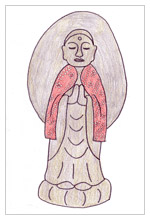
その後、おとくさんが姿を見せないまま何日か過ぎ、近所の人々が総出で山や谷を毎日探し歩きましたが、見つかりませんでした。数日後、山奥の谷で、おとくさんの着物をくわえた狼を見かけたという人が現れました。人々は、それを聞いて大層悲しみ、皆でお堂の前に立派なお墓を立てました。
一年ほど経って、丹後から病気の治った一家四人が名産の丹後ちりめんを持ってお礼にやって来ましたが、宿屋の主人から、おとくさんの哀れな最後を聞いて、とても驚き悲しみ、おとくさんを偲んで、お堂の中に石佛を安置し丹後ちりめんの着物を着せました。
In olden times, the Arima Onsen was called “Yu-no-yama (Bath Mountain)” of the Settsu Country, and there was a hut in the range of mountains after entering the Yu-no-yama or Arima. This hut honoring Buddha and Jizo (guardian deity of children) was built as a place for travelers to rest. At this hut, there was a woman named Otoku who lived there and gathered mountain vegetables and herbs for the guests at an inn. Gradually, the inn had gained a reputation for healing the illness of the guests using mineral baths and providing food with wild plants.
One day a girl and mother came to this inn from the distant land of Tango (a country to the north of Kyoto). The hands and feet of the four people of the family were numb and they experienced extreme pain everyday, but since they had no money, only two, the daughter and the mother, came to be healed. The mother said that if they were healed, she would work hard to bring the husband and son staying at home. Otoku-san soon had them eat mountain vegetables and take mineral baths, but the mother and daughter became weaker each day, and as they lay on their bed crying, the mother said, “We have no more money and have to go home tomorrow.”
Otoku-san knew of a fruit from a tree, which was said to be very effective for all kinds of illnesses. The tree was found close to Konbu Waterfall near her hut. However, a wolf lived near to the tree and this fruit was the favorite of the wolf. Otoku-san had never considered picking the fruit for fear of wolf’s retaliation, but seeing the pitiful sight of the mother and daughter, she instantly resolved to pick fruit from the tree. She discovered the tree with the fruit by Konbu Waterfall. She picked some of the fruit but was careful to leave enough fruit for the wolf. As started to return to the inn with portions for the mother and the daughter, she thought of the father and son suffering in Tango and without thinking she picked the wolf’s portion of the fruit.
When she returned to the inn to feed the mother and daughter, their fever broke, and both their pain and numbness were relieved. With their health restored, the mother and daughter set off to return to Tango. Expressing their gratitude abundantly, the mother and daughter descended the mountain, waving and bowing all the way. Otoku-san, too, was overjoyed seeing the mother and daughter with their health and spirits restored.
Soon after that, Otoku-san was not seen for several days. Her neighbors went out and searched the mountain and fields almost everyday, but Otoku-san was never found. A few days later, a person appeared who said that he had seen the wolf in the valley in the heart of the mountain with Otoku-san’s kimono in its mouth. When everyone heard that, there was a great layer of sadness. They built a fine gravesite for her in front of the hut.
About a year later, the four members of the family came from Tango and brought a Japanese silk crepe, a noted product of Tango, to give to Otoku-san. However, after hearing the sad end of Otoku-san from the master of the inn, they thoughof Otoku-san’s compassion, and in remembrance of Otoku-san, they constructed a stone statue of Buddha inside the hut and clothed the statue in a kimono made of Tango crepe.





 赤ちゃんが生まれた日から7日目に行うお祝いです。
赤ちゃんが生まれた日から7日目に行うお祝いです。 箸揃え、箸祝い、箸初め、とも呼ばれ、生後100~120日に行うお祝いです。「この子が一生食べるのに不自由しないように、困らないように...」との願いが込められています。
箸揃え、箸祝い、箸初め、とも呼ばれ、生後100~120日に行うお祝いです。「この子が一生食べるのに不自由しないように、困らないように...」との願いが込められています。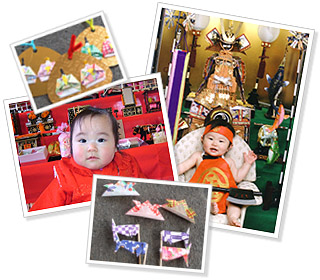
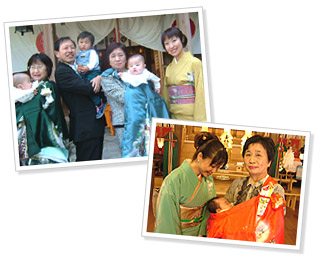
 赤ちゃんが生まれて1年目に、無事に満1歳を迎えたことを喜び、初誕生のお祝いをします。
赤ちゃんが生まれて1年目に、無事に満1歳を迎えたことを喜び、初誕生のお祝いをします。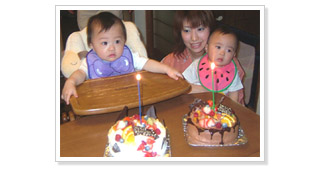
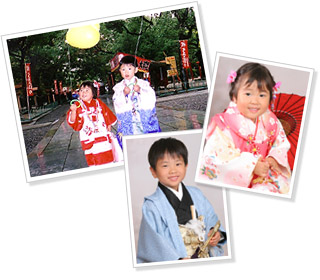
 新米ママは、生まれたばかりの赤ちゃんにどうして接していいか分からず、最初はオロオロしてしまいます。
新米ママは、生まれたばかりの赤ちゃんにどうして接していいか分からず、最初はオロオロしてしまいます。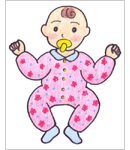 生後100~120日に行う伝統行事である「お食い初め式」の時期に当たります。お家でゆっくりと寛いでいるような雰囲気で、ママものんびりとリラックスできる龍泉閣での「お食い初め」はいかがでしょうか。親子3世代そろっての一家団欒をサポートします。
生後100~120日に行う伝統行事である「お食い初め式」の時期に当たります。お家でゆっくりと寛いでいるような雰囲気で、ママものんびりとリラックスできる龍泉閣での「お食い初め」はいかがでしょうか。親子3世代そろっての一家団欒をサポートします。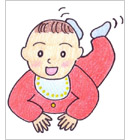 1日のリズムも少しずつ安定してくる頃です。ママのリズムと赤ちゃんのリズムが上手く合えば旅行も大丈夫です。
1日のリズムも少しずつ安定してくる頃です。ママのリズムと赤ちゃんのリズムが上手く合えば旅行も大丈夫です。 1日の生活リズムが少しずつ出来始め、赤ちゃんとママの息も合ってきます。
1日の生活リズムが少しずつ出来始め、赤ちゃんとママの息も合ってきます。 この頃になると、一人遊びも上手に出来るようになります。玩具やオムツを忘れずに持っていきましょう。
この頃になると、一人遊びも上手に出来るようになります。玩具やオムツを忘れずに持っていきましょう。 赤ちゃんにとって、入浴は衛生面だけでなく、適度な運動や生活のリズムにもなります。なるべく毎日同じ時間帯に入れるようにしましょう。生後1ヶ月位までは、ベビーバスに入れて下さい。それ以降は大人と同じ浴槽で結構です。ただし、長湯は赤ちゃんの体力を消耗させますので平均5~6分(夏5分・冬10分)を目安にして、手際よく入れましょう
赤ちゃんにとって、入浴は衛生面だけでなく、適度な運動や生活のリズムにもなります。なるべく毎日同じ時間帯に入れるようにしましょう。生後1ヶ月位までは、ベビーバスに入れて下さい。それ以降は大人と同じ浴槽で結構です。ただし、長湯は赤ちゃんの体力を消耗させますので平均5~6分(夏5分・冬10分)を目安にして、手際よく入れましょう 適温になったのを確認してから赤ちゃんの体をガーゼかタオルで覆い、首を支えて怯えさせないように足の方からゆっくり入れましょう。
適温になったのを確認してから赤ちゃんの体をガーゼかタオルで覆い、首を支えて怯えさせないように足の方からゆっくり入れましょう。 子供のかわいらしい姿と家族の思い出を残すのが写真やビデオです。ビデオの上手な撮影方法をマスターして、素敵な思い出作りに挑戦して下さい。
子供のかわいらしい姿と家族の思い出を残すのが写真やビデオです。ビデオの上手な撮影方法をマスターして、素敵な思い出作りに挑戦して下さい。 ①カメラをしっかりと持って、むやみに動かさずにじっと構えて撮ることを習慣にして下さい。撮りたいものは何かを考えて、見る人に分かりやすく、見やすい映像を撮るように心がけましょう。また、三脚があれば、それにカメラを載せて画面のグラつきをなくすように工夫してみましょう。
①カメラをしっかりと持って、むやみに動かさずにじっと構えて撮ることを習慣にして下さい。撮りたいものは何かを考えて、見る人に分かりやすく、見やすい映像を撮るように心がけましょう。また、三脚があれば、それにカメラを載せて画面のグラつきをなくすように工夫してみましょう。 心の時代を反映して「癒し=ヒーリング」への関心は、世代を越えてますます広がっています。香りの効能を体系的に活用して心身を癒す「アロマテラピー」、動物と接することで心が癒される「アニマル・ヒーリング」などのいろいろな「癒しの技術」が生活の中に浸透しています。
心の時代を反映して「癒し=ヒーリング」への関心は、世代を越えてますます広がっています。香りの効能を体系的に活用して心身を癒す「アロマテラピー」、動物と接することで心が癒される「アニマル・ヒーリング」などのいろいろな「癒しの技術」が生活の中に浸透しています。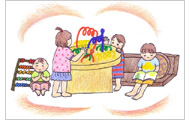 親がいつも先回りして一方的に保護するだけというのでは、子供が自分で考え、学ぶ機会を奪ってしまいます。ぐっとこらえて、子供同士の解決を温かい目で見守るのも親の大切な愛情です。また、親子の信頼関係を深めるためには、親が子供や赤ちゃんにとって「安全基地」であることが重要です。親の居場所を確認すれば、安心して自分の好奇心を満たす遊びや悪戯などに熱中して未知の社会に挑戦していくことでしょう。
親がいつも先回りして一方的に保護するだけというのでは、子供が自分で考え、学ぶ機会を奪ってしまいます。ぐっとこらえて、子供同士の解決を温かい目で見守るのも親の大切な愛情です。また、親子の信頼関係を深めるためには、親が子供や赤ちゃんにとって「安全基地」であることが重要です。親の居場所を確認すれば、安心して自分の好奇心を満たす遊びや悪戯などに熱中して未知の社会に挑戦していくことでしょう。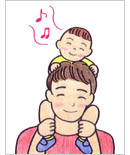 赤ちゃんの世話に慣れてきたら、新米パパも“1日保育”にチャレンジしましょう。赤ちゃんと2人だけで1日過ごす自信がないなら、例え半日でも「赤ちゃんの面倒は任せて、どこかに出かけてきたら?」と、たまにはママを育児から開放してあげましょう。
赤ちゃんの世話に慣れてきたら、新米パパも“1日保育”にチャレンジしましょう。赤ちゃんと2人だけで1日過ごす自信がないなら、例え半日でも「赤ちゃんの面倒は任せて、どこかに出かけてきたら?」と、たまにはママを育児から開放してあげましょう。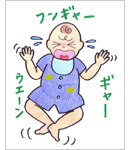 ①赤ちゃんは、とてもよく泣きます。たいていの赤ちゃんは、1日に数え切れないくらいの回数泣いています。昼間だけでなく、親が熟睡している真夜中でも遠慮なく泣きます。しかし赤ちゃんが理由もなく泣くことはありません。自分の意志や状態を伝える手段として泣いているのです。
①赤ちゃんは、とてもよく泣きます。たいていの赤ちゃんは、1日に数え切れないくらいの回数泣いています。昼間だけでなく、親が熟睡している真夜中でも遠慮なく泣きます。しかし赤ちゃんが理由もなく泣くことはありません。自分の意志や状態を伝える手段として泣いているのです。 ※ご用意するもの
※ご用意するもの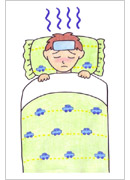 1)「風通しが良い、涼しい場所へ移動させる」
1)「風通しが良い、涼しい場所へ移動させる」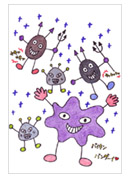
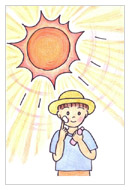 日焼け予防の第一は、日焼け止めクリームを塗ることです。大人も子供も同じです。子供用の日焼け止めクリームは、低刺激性ですから安心してお使いください。また、クリームばかりでなく、お出かけする時には必ず帽子をかぶるようにしましょう。帽子は日焼け予防だけでなく熱中予防にも、また転倒した時の事故防止にもなります。
日焼け予防の第一は、日焼け止めクリームを塗ることです。大人も子供も同じです。子供用の日焼け止めクリームは、低刺激性ですから安心してお使いください。また、クリームばかりでなく、お出かけする時には必ず帽子をかぶるようにしましょう。帽子は日焼け予防だけでなく熱中予防にも、また転倒した時の事故防止にもなります。 大人でも夏場は食欲が落ちてしまいがちです。子供も暑さで体力を消耗しているので、普段より食欲が落ちることがありますが、その時は無理に食べさせようとせずに、水分補給に気を配り、食欲が回復してきたら食べさせるようにしてください。
大人でも夏場は食欲が落ちてしまいがちです。子供も暑さで体力を消耗しているので、普段より食欲が落ちることがありますが、その時は無理に食べさせようとせずに、水分補給に気を配り、食欲が回復してきたら食べさせるようにしてください。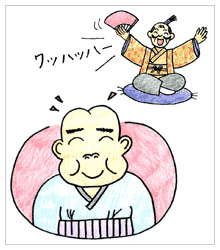
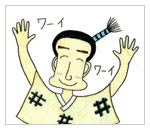
 むかしむかし、まだ有馬温泉が「摂津国の湯山(ゆのやま)」と呼ばれていた頃、湯山 (有馬)に入る最後の峠に小さなお堂がありましたが、これは、旅人が休むための小屋で、仏様やお地蔵様などをお祀りしていました。このお堂で、おとくという小母さんが一人暮らしをしており、宿屋でお客さんのために山菜摘みをしていました。その宿屋は、湯治と山菜料理でお客さんの病気がどんどん回復するので評判になりました。
むかしむかし、まだ有馬温泉が「摂津国の湯山(ゆのやま)」と呼ばれていた頃、湯山 (有馬)に入る最後の峠に小さなお堂がありましたが、これは、旅人が休むための小屋で、仏様やお地蔵様などをお祀りしていました。このお堂で、おとくという小母さんが一人暮らしをしており、宿屋でお客さんのために山菜摘みをしていました。その宿屋は、湯治と山菜料理でお客さんの病気がどんどん回復するので評判になりました。 ある日、遠く離れた丹後(京都の北にある国)から女の子と母親の二人連れがこの宿屋にやってきました。一家四人の手足がしびれ、激しい痛みで毎日苦しんでいるが、お金が十分ないので、とりあえず娘と二人だけで来た。「もし治れば、もっと働いて、家にいる旦那と息子も連れて来たい」と言いました。おとくさんは、直ぐに山菜を食べてもらい、湯治もさせましたが、母娘は日毎に弱っていきました。
ある日、遠く離れた丹後(京都の北にある国)から女の子と母親の二人連れがこの宿屋にやってきました。一家四人の手足がしびれ、激しい痛みで毎日苦しんでいるが、お金が十分ないので、とりあえず娘と二人だけで来た。「もし治れば、もっと働いて、家にいる旦那と息子も連れて来たい」と言いました。おとくさんは、直ぐに山菜を食べてもらい、湯治もさせましたが、母娘は日毎に弱っていきました。 そして、「お金が無くなったので明日帰ります」と言って、布団に横たわったまま泣くのです。
そして、「お金が無くなったので明日帰ります」と言って、布団に横たわったまま泣くのです。 おとくさんは、万病によく効くという木の実を知っており、それは、お堂の近くの、こんぶ滝の直ぐそばに生えていました。
おとくさんは、万病によく効くという木の実を知っており、それは、お堂の近くの、こんぶ滝の直ぐそばに生えていました。 宿屋に帰って母娘に食べさせると、すぐに熱が下り、痛みが取れて痺れもなくなりました。すっかり元気になった母娘は峠の下あたりまで何度も振り返って頭を下げて、お礼を言いながら丹後まで帰っていきました。おとくさんも、その母娘の姿を見て大変喜びました。
宿屋に帰って母娘に食べさせると、すぐに熱が下り、痛みが取れて痺れもなくなりました。すっかり元気になった母娘は峠の下あたりまで何度も振り返って頭を下げて、お礼を言いながら丹後まで帰っていきました。おとくさんも、その母娘の姿を見て大変喜びました。